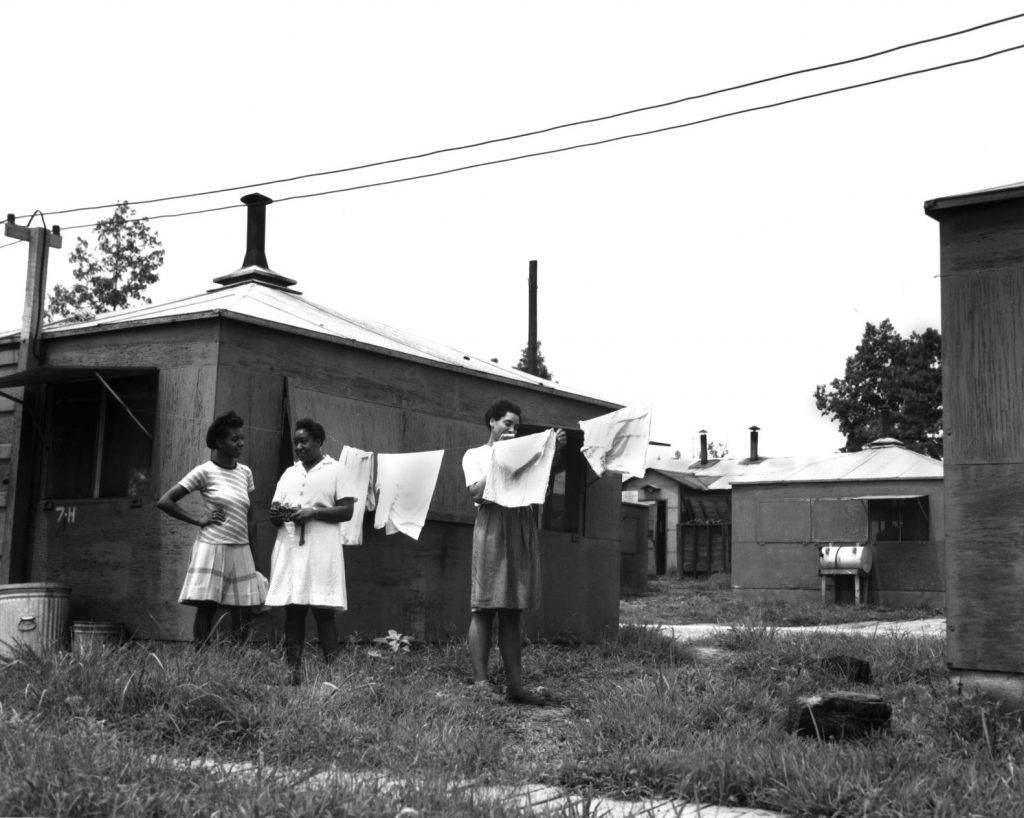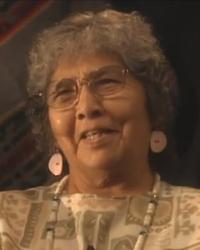The Atomic Heritage Foundation is pleased to announce the publication of two new “Ranger in Your Pocket” online interpretive programs on African Americans and the Manhattan Project and the environmental legacy of the nuclear site at Hanford, Washington.
In viewing these programs, students, online audiences around the world, and visitors to the Manhattan Project National Historical Park can learn about often-overlooked parts of the Manhattan Project’s history. In the program on African-Americans and the Manhattan Project, viewers explore the contributions African American scientists and workers made to the Manhattan Project and the racism they faced. In Hanford’s Environmental Legacy, viewers learn about Hanford’s role in the Manhattan Project and the Cold War, the environmental impacts on the surrounding area, and the recent successes and challenges to cleaning up the site. Both programs feature eyewitness accounts and expert testimony.
 The “African-Americans and the Manhattan Project” program describes the experiences of African Americans before, during, and after World War II. The Great Migration, in which nearly 6 million African Americans moved from the rural South to the Northeast and Midwest, brought African American scientists and workers to Manhattan Project sites such as Hanford, WA, Oak Ridge, TN, and New York City. Manhattan Project veteran CJ Mitchell recounts what brought him to Hanford:
The “African-Americans and the Manhattan Project” program describes the experiences of African Americans before, during, and after World War II. The Great Migration, in which nearly 6 million African Americans moved from the rural South to the Northeast and Midwest, brought African American scientists and workers to Manhattan Project sites such as Hanford, WA, Oak Ridge, TN, and New York City. Manhattan Project veteran CJ Mitchell recounts what brought him to Hanford:
“My uncles and other relatives coming through, they had worked out here [Hanford] and they had come back home. They could earn much more money – about three times the money – here than they could earn back there. And so, the word got around. It got around pretty fast. People were going not only to out here, but they were going to California, Houston, Dallas. They were beginning to migrate to different places because of the work and the war, and the opportunities there.”
Many African Americans endured racism and segregation in search of better opportunities. For example, Jackie Peterson, who curated the “The Atomic Frontier: Black Life at Hanford” exhibit at the Northwest African American Museum, explains how DuPont generally assigned African American women roles working in kitchens or cleaning, even if they were qualified for skilled jobs such as welding. George Warren Reed, a scientist at Columbia University, wanted to enlist into the US Army like his white counterparts so that he could be eligible for the G.I. Bill. However, the draft board in Washington, D.C. denied his claim and stated that they “could not touch him.”
 Jim Crow laws dictated the housing situation for African Americans working on the Manhattan Project at Oak Ridge. Kattie Strickland and her granddaughter Valeria Steele Roberson talk about the housing conditions and restrictions. While Hanford was not formally segregated, Peterson talks about under-the-table deals between banks and real estate agents to force African Americans to live in Pasco, which lies on the other side of the Columbia River from Hanford, and “sundown towns,” such as Kennewick, that prohibited African Americans from entering or staying after sunset.
Jim Crow laws dictated the housing situation for African Americans working on the Manhattan Project at Oak Ridge. Kattie Strickland and her granddaughter Valeria Steele Roberson talk about the housing conditions and restrictions. While Hanford was not formally segregated, Peterson talks about under-the-table deals between banks and real estate agents to force African Americans to live in Pasco, which lies on the other side of the Columbia River from Hanford, and “sundown towns,” such as Kennewick, that prohibited African Americans from entering or staying after sunset.
After World War II ended, many African Americans were laid off and expected to return to their hometowns. However, the Cold War arms race led to increased production of plutonium for nuclear weapons. As a result, previously terminated African American workers were rehired to meet the demand for more personnel. For those who decided to return, they worked to establish and improve their communities and fought for their civil rights. This program features a number of experts, including physicist Ronald Mickens and Manhattan Project veterans Luzell Johnson and Willie Daniels.
The Hanford’s Environmental Legacy program brings together the different perspectives of government officials, Hanford Downwinders, Native Americans, and others to highlight Hanford Site’s complex history and environmental cleanup. Designated the site for plutonium production during the Manhattan Project and the Cold War arms race, Hanford released radioactive gases and created 56 million gallons of waste that have impacted the Columbia River and the surrounding environment. For example, historian Michele Gerber and journalist Karen Dorn Steele talk about the 1949 “Green Run” test, in which iodine-131 radionuclide gas was released in an attempt to test Hanford’s filter system.
 People who lived in the surrounding area, such as the Hanford Downwinders and Native Americans, have suffered from health complications, including several types of cancer and autoimmune diseases that they trace to their exposure to Hanford’s activities. Trisha Pritikin, a Hanford Downwinder and attorney, discusses the radiogenic diseases she developed and her role in suing Hanford contractors and the Department of Energy in what became the longest toxic tort litigation in US history. Veronica Taylor (pictured), a member of the Nez Perce Tribe, talks about cancers she ties to eating contaminated fish and drinking contaminated water from the Columbia River.
People who lived in the surrounding area, such as the Hanford Downwinders and Native Americans, have suffered from health complications, including several types of cancer and autoimmune diseases that they trace to their exposure to Hanford’s activities. Trisha Pritikin, a Hanford Downwinder and attorney, discusses the radiogenic diseases she developed and her role in suing Hanford contractors and the Department of Energy in what became the longest toxic tort litigation in US history. Veronica Taylor (pictured), a member of the Nez Perce Tribe, talks about cancers she ties to eating contaminated fish and drinking contaminated water from the Columbia River.
In 1992, the Department of Energy, the Environmental Protection Agency, and the Washington State Department of Ecology signed the Tri-Party Agreement to govern the cleanup of the Hanford Site. John Price, the Tri-Party Agreement Section Manager for the Washington State Department of Ecology, states that the agreement is a “get-along agreement,” because DOE, Ecology, and EPA have overlapping authorities and responsibilities. “We could be in conflict with each other all the time if we didn’t have a get-along agreement that says, ‘Here’s how we’re going to do our work, and we’ll agree to do things in a certain way, even though we may both have authority or responsibility over something. We’ve got some rules that we don’t get in each other’s way.’”
Over the years, progress has been made in cleaning up Hanford, such as stopping waste discharge to the soil. However, many challenges remain that inhibit the total cleanup of this Superfund site, including funding, politics, and lack of public interest. The program features experts with a range of perspectives, including Tom Carpenter, executive director of the nonprofit watchdog Hanford Challenge, and Keith Klein, the former manager for the Department of Energy at Hanford.
 The two programs illuminate the underrepresented stories of African Americans’ contributions to and experiences with the Manhattan Project and Hanford’s complicated environmental impacts and cleanup. For African Americans who worked on the Manhattan Project, there was a mixture of pride and horror when they learned about the final outcome of their work. James Forde captures this mixed reaction: “I was in on something big and something exciting. I am so proud of it. When I see some of the shots of what the cities [Hiroshima and Nagasaki] looked like and the people that survived and what happened—it is a very scary situation.” As for Hanford’s future, the road to cleanup remains long and arduous. It ultimately boils down to, as Klein says, “to communications and alignment” of differing perspectives on Hanford.
The two programs illuminate the underrepresented stories of African Americans’ contributions to and experiences with the Manhattan Project and Hanford’s complicated environmental impacts and cleanup. For African Americans who worked on the Manhattan Project, there was a mixture of pride and horror when they learned about the final outcome of their work. James Forde captures this mixed reaction: “I was in on something big and something exciting. I am so proud of it. When I see some of the shots of what the cities [Hiroshima and Nagasaki] looked like and the people that survived and what happened—it is a very scary situation.” As for Hanford’s future, the road to cleanup remains long and arduous. It ultimately boils down to, as Klein says, “to communications and alignment” of differing perspectives on Hanford.
The Atomic Heritage Foundation is very grateful to the M.J. Murdock Charitable Trust for its financial support. Special thanks to Trisha Pritikin, Karen Dorn Steele, Thomas Marceau, Jackie Peterson, Keith Klein,Gary Peterson, Mark Morrison-Reed, Vanessa Moore, and many others who shared their stories, family photographs, and expertise for this project.





